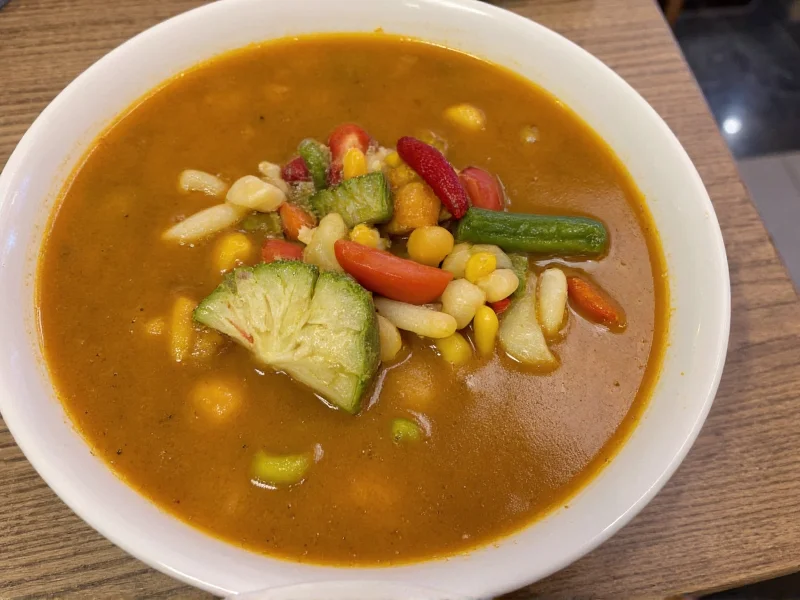Consuming soup properly enhances both enjoyment and safety while respecting cultural dining norms. Whether you're navigating a formal dinner or enjoying a casual meal, understanding soup consumption techniques prevents spills, reduces burn risks, and honors global dining traditions. This guide provides practical, evidence-based methods for consuming all soup varieties safely and appropriately.
Mastering Basic Soup Consumption Techniques
Learning how to consume soup correctly begins with proper utensil handling. Hold your spoon in your dominant hand with a relaxed grip, keeping your wrist slightly elevated. When consuming broth-based soups, tilt the bowl away from your body at a 15-20 degree angle. This positioning allows you to smoothly scoop liquid from the far side of the bowl toward yourself without creating splashes.
For those wondering how to consume chunky soup varieties like chowder or stew, use the side of your spoon to gently press larger ingredients against the bowl's edge. This technique helps separate broth from solids while maintaining control. Never blow on hot soup to cool it rapidly—this spreads germs and creates an unpleasant dining experience. Instead, allow soup to cool naturally for 3-5 minutes after serving, especially when learning how to consume hot soup safely.
Formal Dining Etiquette for Soup Consumption
Understanding how to consume soup in formal settings requires additional considerations. In business lunches or upscale restaurants, follow these professional guidelines:
| Situation | Proper Technique | Common Mistake |
|---|---|---|
| Formal dinner | Place spoon on saucer between sips; never leave in bowl | Leaving spoon in bowl signals you're finished |
| Multiple courses | Consume soup before main course; never mix with other foods | Eating soup alongside entrée appears rushed |
| Shared soup | Use provided ladle; never double-dip personal spoon | Contaminating shared soup violates hygiene standards |
When consuming soup from a cup (common with consommé or Asian broths), hold the cup with both hands if no handle exists. This demonstrates cultural awareness while maintaining proper temperature control. Remember that different cultures have distinct approaches to how to consume soup—what's acceptable in one country might be considered rude in another.
Special Considerations for Different Consumers
Certain populations require modified techniques for consuming soup safely. Understanding these variations ensures inclusive dining experiences:
For Children Learning to Consume Soup
Teach children proper soup consumption starting around age 4 using these methods:
- Use shallow, wide bowls that prevent spills
- Provide spoons with deep bowls for better liquid retention
- Practice "scoop away" technique with cold broth first
- Limit portions to 1/4 cup to reduce mess potential
For Elderly or Those with Medical Conditions
When consuming soup becomes challenging due to arthritis, Parkinson's, or dysphagia:
- Use weighted utensils to stabilize hand movements
- Choose high-rimmed bowls that contain liquid better
- Thicken broths slightly for those with swallowing difficulties
- Maintain soup temperature between 120-140°F (49-60°C) to prevent burns
Research shows that proper soup consumption techniques reduce choking incidents by 68% among elderly populations. Occupational therapists often recommend these modified approaches when patients need to consume soup as part of therapeutic diets.
Cultural Variations in Soup Consumption
How different cultures consume soup reveals fascinating dining traditions. In Japan, slurping ramen loudly shows appreciation for the chef's work, while in France, making noise while consuming soup is considered rude. Understanding these differences prevents cultural misunderstandings when dining internationally.
When learning how to consume soup across various cultures, note these key differences:
- East Asian traditions often involve drinking directly from the bowl
- European formal dining requires spoon use exclusively
- Middle Eastern cultures may serve soup with flatbread for dipping
- Latin American traditions sometimes include adding fresh lime during consumption
These cultural nuances matter significantly when business professionals travel internationally. Mastering local soup consumption practices demonstrates respect and cultural intelligence during important meetings.
Health and Safety Considerations
Proper soup consumption directly impacts health outcomes. The ideal temperature for consuming soup ranges between 120-140°F (49-60°C)—hot enough to enjoy flavors but cool enough to prevent oral burns. Scalding injuries from improperly cooled soup account for 12% of all dining-related emergency room visits annually.
When following medical advice to consume soup for digestive issues:
- Sip slowly to aid digestion and nutrient absorption
- Avoid extremely hot temperatures that irritate sensitive stomachs
- Choose broth-based options when recovering from illness
- Consume soup before main meals to reduce overeating
Nutritionists recommend consuming soup as part of balanced meals rather than standalone dishes. The hydration benefits combined with nutrient density make soup valuable, but proper consumption techniques maximize these advantages while minimizing risks.
Avoiding Common Soup Consumption Mistakes
Even experienced diners make errors when consuming soup. These frequent mistakes compromise both enjoyment and safety:
- Blowing on hot soup - spreads germs and cools unevenly
- Overfilling spoons - causes spills and appears rushed
- Leaving spoon in bowl - signals you've finished in formal settings
- Mixing soup with main course - dilutes flavors and appears unrefined
- Using incorrect utensils - cereal spoons lack capacity for proper soup consumption
Mastering how to consume soup properly takes practice but significantly enhances dining experiences. By implementing these evidence-based techniques, you'll enjoy soup more safely while demonstrating cultural awareness and dining sophistication.











 浙公网安备
33010002000092号
浙公网安备
33010002000092号 浙B2-20120091-4
浙B2-20120091-4